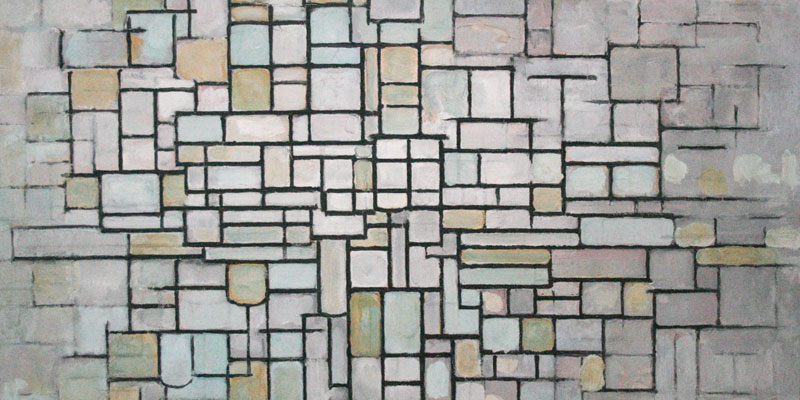The issue
The reputation of the De Stijl collection at the Gemeentemuseum Den Haag has gone through significant turmoil. In 1998, a national scandal followed the Dutch government’s purchase of Mondrian’s unfinished canvas Victory Boogie Woogie for $40m from a private American collector. The deal for the picture was struck in private and subsequently required the finance minister to seek a retrospective royal decree, which attracted a storm of criticism that challenged the integrity of the government.
Following the institution of the Cultural Canon in 2007, the curator responsible for the Mondrian collection at the museum, Hans Janssen, contacted Michael White to discuss the possible re-presentation of Mondrian and De Stijl in the museum.
The research
White examined the connections between artists associated with the De Stijl group and modernising projects more generally in the Netherlands in the early twentieth century in a monograph. Much of his research was carried out using archival and library resources to provide a better understanding of the local reform discourses that brought about the group’s formation and intersected with its development.
Where the history of De Stijl previously emphasised its position in a succession of modernist movements centred on locations of international cultural activity, such as Paris, this study demonstrated that the group was better understood from the opposite end of the telescope – the housing estates of Rotterdam. White’s principal argument was that De Stijl should not be understood in the manner in which avant-gardism has traditionally been presented: as the failed, utopian attempt to utilise aesthetic principles developed in isolation to effect social change. Rather, De Stijl needed to be understood as both a product of social processes and as a catalyst for their transformation.
The attention White paid to the interaction of local and international currents of cultural production, to the relationships between esoteric, avant-garde artistic activity and the everyday, and to the world of commerce as well as fine art, made his research particularly influential at a moment when the Dutch government sought to emphasise the relevance of cultural knowledge to the wider population through the introduction of the Cultural Canon.
The final display at the Gemeentemuseum Den Haag included several sections focussing explicit elements of White's research, such as the patronage of De Stijl by industrialists like Cornelis Bruijnzeel, a wood manufacturer whose company still exists in the Netherlands and is one of the largest suppliers of fitted kitchens.
The outcome
Since opening, the display has provided the first port of call for members of the public, schools and community groups who wish to find out more about what is now nationally recognised as the most important artistic contribution to the cultural life of the Netherlands of the twentieth century, as well as Dutch contribution to European modernism.
To accompany the display, the museum commissioned a book, Het verhaal van De Stijl / The Story of De Stijl, inviting White to co-author it with the curator. The decision to publish in both English and Dutch indicates that the results of White’s original research are being disseminated not just to an Anglophone academic audience, but to a Dutch generalist audience, and to the very many English-speaking international visitors the museum receives every year.

